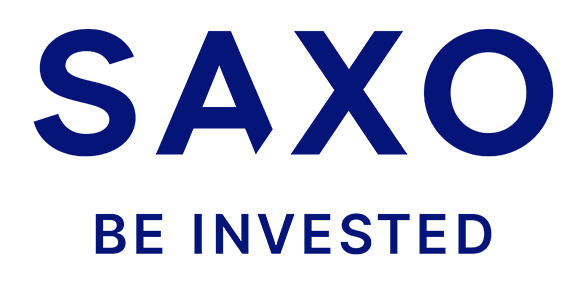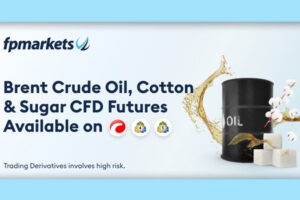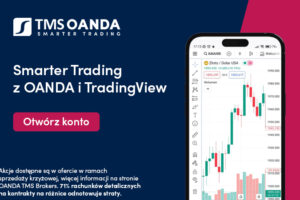S&P 400 - what is the characteristic of the american mid-cap index? [GUIDE]
The S&P 400 is an index of XNUMX US companies that are classified in the mid-cap category. The index is created by S&P Dow Jones Indices (SPDJI), which belongs to the S&P Global company listed on the US stock exchange (ticker: SPGI).
The index was established in June 1991, and the first quotation was made on July 1, 1991. The S&P 400 reflects the market condition of medium-sized companies, which can be called the "vestibule" to S & P 500. According to the SPDJI, at the end of October 2020, the capitalization of the index was $ 1 billion. This gives an average valuation of the company included in the index at $ 774,2 billion. However, the capitalization spread is very large, ranging from $ 4,4 million to $ 630 billion.
The S&P 400 index compared to other segments
The table below presents the average annual rates of return for indices representing large (S&P 500), medium (S&P 400) and small (S&P 600) companies. The rates of return are "Total return", that is, they include tax-free reinvestment of dividends.
| Average annual rate of return | 10 years old | 5 years old | 3 years old |
| S & P 500 | 13,01% | 11,71% | 10,42% |
| S & P 400 | 10,36% | 7,39% | 2,87% |
| S & P 600 | 10,39% | 6,48% | 0,2% |
How is the index calculated?
The index is calculated according to “Float-adjusted market cap weighted”. This means that the index components are derived from market capitalization multiplied by the percentage of free float. Shares owned by the government or company managers are deducted from free circulation.
It sounds complicated, but the idea is very simple. After the stock market capitalization of the company is determined, the number of free-float shares is calculated in relation to all issued shares. If a company has 100 shares worth $ 000, its capitalization is $ 500 million. If only 50% of the shares are in free float (50), the float-adjusted market cap is $ 50m.
Index selection criteria
To join the index:
- to be an American company with a capitalization of $ 2,4 billion to $ 8,2 billion.
"Fork" capitalizations are updated from time to time by "Index Committee". In 2007, the required capitalization was between $ 1,5 billion and $ 5,5 billion. During the subprime crisis, the requirements were lowered to $ 750 million - $ 3,3 billion.
- the index component must have a free-trade market value of $ 1,2 billion.
- the company must achieve a positive financial result for the last 4 quarters.
- The monthly trading volume in the last 6 months must be at least 250 shares. The minimum value of turnover in the last year must be equal to the float - adjusted capitalization.
- The following are allowed: shares listed on American stock exchanges, REITs. They are off ETFs, companies listed through ADR or ADS.
When is the index rebalancing
The index is rebalanced every quarter (March, June, September and December). One of the changes in the composition of the index took place on September 21, 2020. 7 companies left the index and 7 were included in it. One of the companies that left the S&P 400 index is Transocean, which was replaced by Jazz Pharmaceutics. Below is a table showing the next 6 changes:
| Company name | Previous index | Included in the index |
| Etsy Inc. | S & P 400 | S & P 500 |
| Teradyne Inc. | S & P 400 | S & P 500 |
| Catalent Inc. | S & P 400 | S & P 500 |
| H&R Block Inc. | S & P 500 | S & P 400 |
| Coty Inc. | S & P 500 | S & P 400 |
| Kohl's Corp | S & P 500 | S & P 400 |
| Wingstop Inc. | S & P 600 | S & P 400 |
| Medpace Holdings Inc. | S & P 600 | S & P 400 |
| Fox Factory Holding Corp. | S & P 600 | S & P 400 |
| Allegheny Technologies Inc. | S & P 400 | S & P 600 |
| PBF Energy Inc. | S & P 400 | S & P 600 |
| Mack-Cali Realty Corp. | S & P 400 | S & P 600 |
Index composition
The basic source of information about the sectors in which companies operate is the GICS classification, i.e. Global Industry Classification Standards. It is a method of assigning a given company to the sector that best defines the business. GICS was created by Morgan Stanley Capital International (MSCI) and S&P. It consists of 11 sectors. It is one of the two main company classification systems. A competing solution is the Industry Classification Benchmark (ICB), which is developed by Dow Jones and FTSE.
The S&P 400 index includes companies from all eleven sectors according to the GICS classification. The top 5 account for about ¾ of the entire S&P 400 index. These sectors are:
- Industry (17,8%)
- IT (16,1%)
- Discretionary goods (14,7%)
- Finance (14,5%)
- Healthcare (11,6%).
Composition of the index
The S&P 400 index is very diversified in terms of the conduct of business by companies. The components include a prison operator, a snowmobile manufacturer, and a barrel maker. Here are some examples of 5 companies included in the S&P 400 index:
FAIR ISAAC CORPORATION (FICO)
The company deals with the provision and aggregation of data. He specializes in providing credit scoring. The company's flagship product is the FICO score, which measures the credit risk of a retail client. Based on the FICO score, the client's "solvency" is determined. In simple terms, it is the US equivalent of the BIK scoring. The company boasts that in over 90% of credit decisions in the US, the FICO rating is taken into account.
| FICO (million $) | 2017 | 2018 | 2019 |
| revenues | 932,2 | 1 032,5 | 1 160,3 |
| Operational profit | 181,7 | 206,4 | 253,5 |
| Operating margin | 19,5% | 20,0% | 21,8% |
| Earnings per share (EPS) | 4,1$ | 4,59$ | 6,34$ |
SERVICE CORPORATION INTERNATIONAL (SCI)
Provides funeral services in 44 states in the US and 8 regions in Canada. At the end of 2019, the company had 1471 funeral homes and crematoria, and 482 cemeteries. It is the largest company of its kind in the US, with over 15% of the US cemetery market. The company's offer includes such services as: organizing funerals, funeral ceremonies, cremation, commemoration, selling accessories: urns, jewelry, etc.).
| SCI (million $) | 2017 | 2018 | 2019 |
| revenues | 3 0,95,0 | 3 190,2 | 3 230,8 |
| Operational profit | 567,8 | 614,8 | 633,7 |
| Operating margin | 18,3% | 19,3% | 19,6% |
| Earnings per share (EPS) | 2,16$ | 2,28$ | 1,92$ |
FACTSET RESEARCH SYSTEMS
FactSet deals with aggregation of financial data and offering specialized software for employees of financial institutions (portfolio managers, analysts, investment advisers, etc.). The clients are both buy-side employees (e.g. investment fund analysts) and sell-side parties (brokerage house analysts). The software allows, among others find investment opportunities, manage risk and analyze the composition of the investment portfolio. It is one of the top 5 software vendors of this type. Competitors include Bloomberg, Refinitiv, S&P Global Market Intelligence.
| FDS (million $) | 2017 | 2018 | 2019 |
| revenues | 1 350,1 | 1 435,4 | 1 494,1 |
| Operational profit | 366,2 | 438,0 | 439,7 |
| Operating margin | 27,1% | 30,5% | 29,4% |
| Earnings per share (EPS) | 7,89$ | 9,12$ | 10,4$ |
DOMINO'S PIZZA
He is the owner of the Domino's Pizza brand. At the end, there were over 19 restaurants (franchised and own) under the Domino's logo. The company is present in over 000 countries around the world. The company operates mainly in the franchise model. Over 90% of locations are franchised. This allows the company to achieve stable revenues and a decent operating margin. This is because Domino's charges fees based on the revenues earned by the franchisee. In the USA, Domino's has 98 franchise locations operated by 5 franchisees.
The company's largest partner is Domino's Pizza Enterprises listed on the Australian market, which is a franchisee of the Domino's brand for: Australia, New Zealand, Benelux countries, France, Japan, Germany and Denmark. This franchisee operates 2604 restaurants.
| DPZ (million $) | 2017 | 2018 | 2019 |
| revenues | 2 788,0 | 3 432,9 | 3 618,8 |
| Operational profit | 521,2 | 571,7 | 629,4 |
| Operating margin | 18,7% | 16,7% | 17,4% |
| Earnings per share (EPS) | 5,88$ | 8,27$ | 9,61$ |
TREX COMPANY
Trex Company Inc. is a producer of "alternative to wood" floors, balustrades and stairs. The company's solutions are made of recyclable materials such as wood and plastic by-products. The main ingredients are sawdust, pallets, wood chips or fibers, and recycled plastic (shopping bags, etc.). The company boasts that 95% of flooring components are made of recycled products. Trex products are cheaper to maintain and more durable than similar solutions made of wood alone. The company's production facilities are located in Virginia and Nevada.
| TREX (million $) | 2017 | 2018 | 2019 |
| revenues | 565,2 | 684,3 | 745,3 |
| Operational profit | 142,4 | 176,7 | 188,2 |
| Operating margin | 25,2% | 25,8% | 25,3% |
| Earnings per share (EPS) | 0,21$ | 0,57$ | 0,62$ |
Investing in the S&P 400 index
ETF on the S&P 400 index
There is an easier way to invest your funds in US midsize companies. ETFs can be used instead of selecting individual companies on the S&P 400 index. The most popular of them include:
iShares Core S&P Mid-Cap ETF (IJH)
-
- Issuer: Blackrock
- Assets under management (AUM): $ 45,8 billion
- Annual fees: 0,05%
- Average daily turnover (45 days): $ 183 million
SPDR S&P Midcap 400 ETF Trust (MDY)
-
- Issuer: State Street Global Advisors
- Assets under management (AUM): $ 15,2 billion
- Annual fees: 0,23%
- Average daily turnover (45 days): $ 307 million
CFDs
You can invest in selected brokers CFDswhich reflects the behavior of the above ETFs or shares of key companies that make up its composition. It is also possible to invest in CFDs on the S&P 400 index itself. It is possible, for example, in CMC Markets.
| Broker |  |
 |
 |
| End | Poland | Denmark | Cyprus * |
| Shares on offer | approx. 3500 - shares approx. 2000 - CFDs on stocks 16 exchanges |
19 - shares 8 - CFDs on stocks 37 exchanges |
approx. 3 - CFDs on stocks 23 exchanges |
| Min. Deposit | PLN 0 (recommended min. PLN 2000 or USD 500, EUR) |
0 PLN / 0 EUR / 0 USD | PLN 500 |
| Platform | xStation | SaxoTrader Pro Saxo Trader Go |
Plus500 platform |
* PLUS500 CY offer
CFDs are complex instruments and come with a high risk of losing money rapidly due to leverage. From 72% to 89% of retail investor accounts record monetary losses as a result of trading CFDs. Think about whether you understand how CFDs work and whether you can afford the high risk of losing your money.
Futures and options
The S&P 400 index is also an underlying instrument in futures and options contracts. Futures contracts are settled in March, June, September and December.
In a futures contract, the value of 1 index point is $ 100, and as of November 6, the derivative's nominal value was $ 203.
On the CME exchange there are options for the e-mini S&P 400 futures contract. The underlying instrument for the options is one futures contract on the S&P 400 index. The options have a quarterly expiry period (March, June, September, December). Weekend options are also available. The instrument is not very popular among investors.






















![Forex Club – Tax 9 – Settle tax on a foreign broker [Download the Application] Forex Club - Tax 9](https://forexclub.pl/wp-content/uploads/2024/02/Forex-Club-Podatek-9-184x120.jpg?v=1709046278)
![Trading View platform – solutions tailored to the needs of traders [Review] trading view review](https://forexclub.pl/wp-content/uploads/2024/03/trading-view-recenzja-184x120.jpg?v=1709558918)
![How to connect your FP Markets account to the Trading View platform [Guide] fp markets trading view](https://forexclub.pl/wp-content/uploads/2024/02/fp-markets-trading-view-184x120.jpg?v=1708677291)
![How to invest in ChatGPT and AI? Stocks and ETFs [Guide] how to invest in chatgpt and artificial intelligence](https://forexclub.pl/wp-content/uploads/2023/02/jak-inwestowac-w-chatgpt-i-sztuczna-inteligencje-184x120.jpg?v=1676364263)




![Izabela Górecka – “Success on the market depends not only on knowledge, but also on emotional stability” [Interview] Izabela Górecka - interview](https://forexclub.pl/wp-content/uploads/2024/04/Izabela-Gorecka-wywiad-184x120.jpg?v=1713870578)
![WeWork – the anatomy of the collapse of a company valued at $47 billion [WeWork, part II] wework bankruptcy story](https://forexclub.pl/wp-content/uploads/2024/04/wework-bankructwo-historia-184x120.jpg?v=1711729561)
![Adam Neumann – the man who screwed up Softbank [WeWork, part AND] adam neumann wework](https://forexclub.pl/wp-content/uploads/2024/04/adam-neumann-wework-184x120.jpg?v=1711728724)




![The most common mistakes of a beginner trader - Mr Yogi [VIDEO] Scalping - The most common mistakes of a beginner trader - VIDEO](https://forexclub.pl/wp-content/uploads/2024/03/Scalping-Najczestsze-bledy-poczatkujacego-tradera-VIDEO-184x120.jpg?v=1711601376)
![Learning patience: No position is also a position - Mr Yogi [VIDEO] Scalping - Learning patience - No position is also a position - VIDEO](https://forexclub.pl/wp-content/uploads/2024/03/Scalping-Nauka-cierpliwosci-Brak-pozycji-to-tez-pozycja-VIDEO-184x120.jpg?v=1710999249)
![When to exit a position and how to minimize losses - Mr Yogi [VIDEO] Scalping - When to exit a position and how to minimize losses - VIDEO](https://forexclub.pl/wp-content/uploads/2024/03/Scalping-Kiedy-wyjsc-z-pozycji-i-jak-minimalizowac-straty-VIDEO-184x120.jpg?v=1710336731)



![S&P 400 - what is the characteristic of the american mid-cap index? [GUIDE] S&P 400 index etf](https://forexclub.pl/wp-content/uploads/2020/11/SP-400-index-etf.jpg?v=1604998838)



![S&P 400 - what is the characteristic of the american mid-cap index? [GUIDE] bitcoin cash hard fork](https://forexclub.pl/wp-content/uploads/2020/11/bitcoin-cash-hard-fork-102x65.jpg?v=1604996084)
![S&P 400 - what is the characteristic of the american mid-cap index? [GUIDE] trade policy joe biden](https://forexclub.pl/wp-content/uploads/2020/11/polityka-handlowa-joe-biden-102x65.jpg?v=1605004027)










Perchè non indicare anche i codici ISIN nei vari prodotti? Grazie.